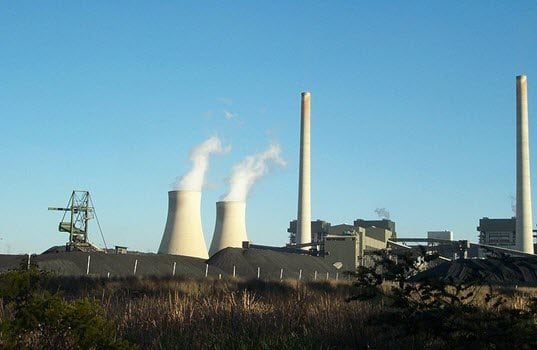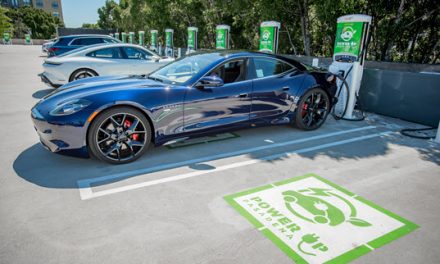The Obama Administration’s most recent announcement of aggressive and unilateral executive action on energy policy—through the EPA—primarily impacts coal and electricity generation. Natural gas should also be impacted indirectly in a positive manner from a demand standpoint as gas replaces coal. Although FMN’s readership is focused on liquid fuels, this latest initiative is instructional on general trends in energy policy under the current administration and its willingness to bypass the legislative branch as needed. Of course, convenience store operators will be directly impacted by any increase in the cost of electricity.
Cap and Trade was, and remains, a non-starter legislatively, and there is virtually no grass roots support of any scale to otherwise push a climate change agenda to the forefront. Nor does this make a great deal of political sense in an election year as it alienates voters in key coal states and traditionally Democrat-supporting unions. However, here we are. As many pundits have stated, this is apparently a personal ideological/legacy issue for the president.
Here are some of the viewpoints being presented by various impacted parties:
Gist of the EPA Proposed Rule— Nationwide, by 2030, this rule would achieve CO2 emission reductions from the power sector of approximately 30 percent from CO2 emission levels in 2005. This goal is achievable because innovations in the production, distribution and use of electricity are already making the power sector more efficient and sustainable while maintaining an affordable, reliable and diverse energy mix. This proposed rule would reinforce and continue this progress. The EPA projects that, in 2030, the significant reductions in the harmful carbon pollution and in other air pollution, to which this rule would lead, would result in net climate and health benefits of $48 billion to $82 billion. At the same time, coal and natural gas would remain the two leading sources of electricity generation in the U.S., with each providing more than 30 percent of the projected generation.
American Petroleum Institute—API President and CEO Jack Gerard raised concerns over EPA’s newly-proposed regulations on greenhouse gases from existing power plants in a statement today: “This proposal is not consistent with the administration’s own ‘all of the above’ energy strategy. The uncertainty created will have a chilling effect on energy investment that could cost jobs, raise electricity prices and make energy less reliable. The energy sector is already one of the most heavily regulated industries in the United States. Our air is getting cleaner under existing regulations, and carbon emissions are down due to technological advancements developed by the private sector. We can continue to make environmental progress without damaging the economy.”
American Public Power Association—The American Public Power Association (Public Power) believes climate change should be addressed but Congress, not EPA, should determine the best framework outside of the Clean Air Act to do so while ensuring affordable, reliable electricity from all fuel sources, including coal and natural gas. The Clean Air Act is ill-suited to regulate CO2 emissions. If the EPA moves forward with regulations that call for too much change too fast, we will likely see unnecessary coal-plant retirements without long-term plans for viable, cost-effective alternatives; higher electricity prices; and potential shortage of electricity supply.
“Public power utilities are good environmental stewards. But we need a middle path, one that respects the needs of energy producers and the pocketbooks of energy customers,” said Sue Kelly, president and CEO of the American Public Power Association. Kelly cited the example of Germany’s “all-in” approach to renewables, which has doubled the average residential electric bill since 2000, with a further 40 percent increase projected by 2020.
The electric utility industry in the U.S. has reduced its carbon dioxide emissions by more than 12 percent between 2007 and 2012, without federal rules and regulations. Over the last decade, public power utilities have added new generation resources with lower or no emissions — wind, solar, hydro, biomass, nuclear, and natural gas. These utilities also have been aggressive in supporting efficiency in energy use by customers and encouraging demand response and load management. As utilities continue down this path, CO2 emissions are expected to further decline over time.
However, public power utilities using coal-fired generation — especially units that are now being upgraded and retrofitted to deal with current EPA regulations — need to be able to continue to use those facilities for their remaining useful life. “Regulations have to be considered comprehensively. Otherwise we run the risk of high electricity rates for customers, undue revenue losses for utilities that must be paid for by local communities and other adverse economic impacts, causing an unintended backlash that would help no one,” said Kelly.
EIA Backgrounder (What is the role of coal in the United States?)—The United States holds the world’s largest estimated recoverable reserves of coal and is a net exporter of coal. In 2013, U.S. coal mines produced just under one billion short tons of coal, the lowest output level since 1993. More than 90% of this coal was used by U.S. power plants to generate electricity. While coal has been the largest source of electricity generation in the United States for over 60 years, its annual share of total net generation declined from nearly 50% in 2007 to 39% in 2013 as some power producers switched to more competitively priced natural gas. At the same time, new environmental regulations also made it more costly to operate some coal plants.
American Coal Council (comments)—The U.S. has already invested about $118 billion to improve air quality, reducing conventional emissions of SO2, NOx, and particulate matter by approximately 89% since 1970.
Technology development was largely in step with these reductions. In more recent years, U.S. electric utilities have faced a huge number of environmental regulations on all fronts – air, water, and waste – which have contributed to widespread shuttering of existing coal generating capacity. According to the American Coalition for Clean Coal Electricity, EPA’s rules have contributed to the closure of over 300 existing coal units totaling more than 50,000 megawatts of electric generating capacity.
Additionally, the regulatory uncertainty caused by the April 2012 precursor to EPA’s currently-proposed GHG rule had the effect of stopping development plans for most of the approximately 15 plants that had received a PSD permit but not begun construction, in spite of the exemption EPA included in that proposed rule.45 When EPA did not propose that rule within a year and instead re-proposed it in 2013 without any exemption for transitional sources, the impact was fully manifested.
In addition to the ongoing impacts of regulation already promulgated by EPA, proceeding down a regulatory path which effectively prohibits the development of new coal generation is extreme and ill-advised. Such a path unnecessarily risks U.S. energy reliability, affordability, security and diversity for virtually no identified benefits. It puts at risk more than 800,000 coal related jobs as well as our business and manufacturing base. It inflicts the risk of rising electricity prices on all people and businesses, but most importantly on those who can least afford it such as the poor and those on fixed incomes. To those who proclaim it is a moral imperative to address climate change, we ask “Where is the moral imperative to provide reliable, affordable energy and good jobs in America?”
Given the widespread and detrimental impacts of this rule as proposed, the American Coal Council urgently requests that EPA significantly revise it to address the concerns and shortcomings outlined above
National Resources Defense Council (press release)— The first-ever limits on carbon pollution from power plants can save American households and business customers $37.4 billion on their electric bills in 2020 while creating more than 274,000 jobs, a Natural Resources Defense Council analysis shows.
“Most Americans support curbing dangerous carbon pollution from power plants because it’s the right thing to do. Cleaning up dirty power plants can be a bonanza for public health and a boon for energy efficiency jobs – and save Americans on their electric bills,” said Daniel Lashof, chief operating officer at NextGen Climate America, and senior fellow at NRDC who oversaw development of the NRDC proposal. “This is a winning step toward a cleaner, cheaper and healthier 21st Century energy future. It’s time to get moving.”
NRDC’s approach, introduced in December 2012, is largely driven by energy efficiency investments and grants states the flexibility to meet the standards in ways that best meet their individual needs, such as accounting for their differing energy mixes.
What’s interesting about these developments is that if climate change is actually linked in some substantial way to human activity, and not just the current cycle in a pattern of solar-influenced warming and cooling as old as the Earth itself, the actual impact of these unilateral American initiatives on climate change is virtually nil. And, if the NRDC’s glowing positive jobs and economic estimates are wrong, and such a centrally dictated, massive disruption in domestic energy production turns out to be harmful then it hurts American competitiveness and individual Americans at the expense of international competitors that lack similar environmental impulses. See below:
The New York Times (With China and India Ravenous for Energy, Coal’s Future Seems Assured – Nov. 12, 2012)— Global demand for coal is expected to grow to 8.9 billion tons by 2016 from 7.9 billion tons this year, with the bulk of new demand — about 700 million tons — coming from China, according to a Peabody Energy study. China is expected to add 240 gigawatts, the equivalent of adding about 160 new coal-fired plants to the 620 operating now, within four years. During that period, India will add an additional 70 gigawatts through more than 46 plants.
“If you poke your head outside of the U.S., coal-fired plants are being built left and right,” said William L. Burns, an energy analyst with Johnson Rice in New Orleans. “Coal is still the cheapest fuel source.”
Besides strong demand for thermal coal, which is burned in power plants, use of metallurgical coal or coking coal, used in blast furnaces, is also expected to more than double in China, to about 1.7 billion metric tons by 2016, as the country’s steel mills churn out more steel for automobiles, skyscrapers and export goods, the Peabody study says.









